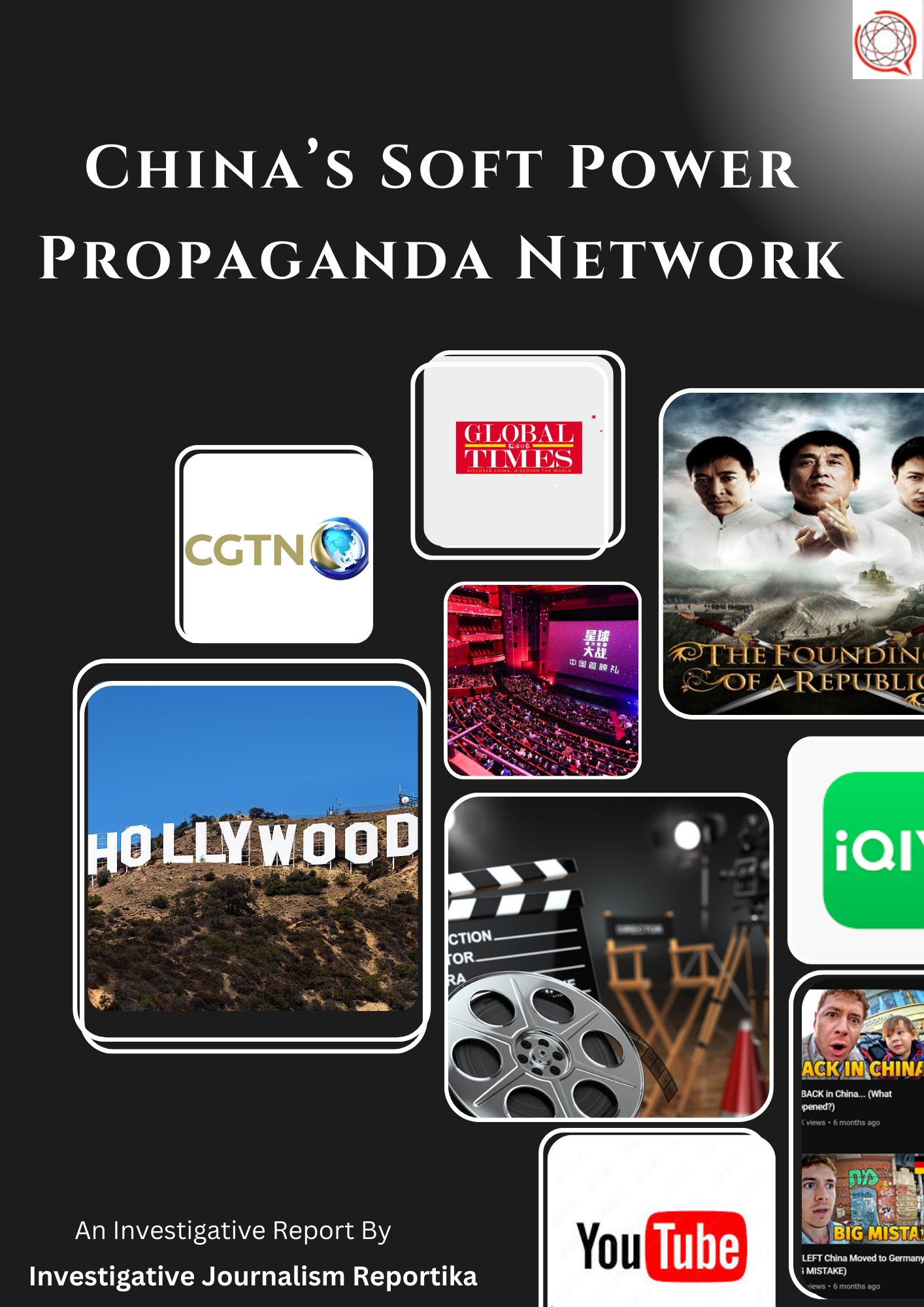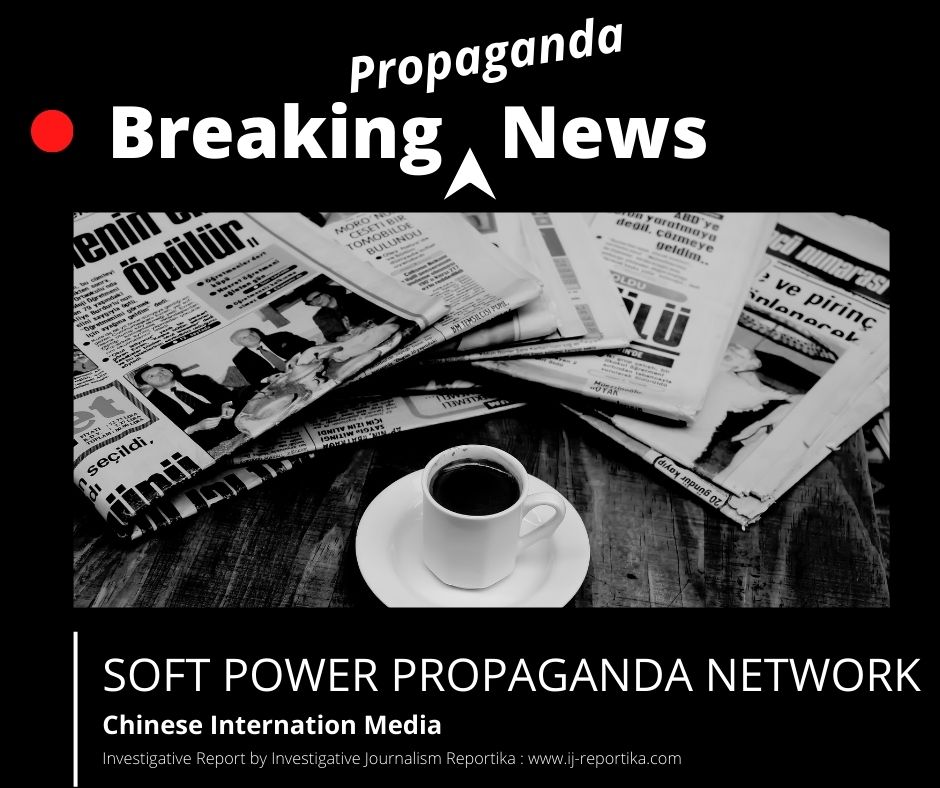Download the Complete Report
China’s efforts to bolster its soft power have been a focal point of its foreign policy for years. Soft power, a term coined by Joseph Nye, refers to the ability of a country to shape the preferences of others through appeal and attraction rather than coercion or payment. For China, this means influencing global culture both through the production and export of its cultural products and by molding foreign cultural productions to align with the Chinese Communist Party’s (CCP) interests. This report delves into the export of Chinese cultural products designed to influence foreign audience and entice them with its geopolitical narrative.

By the end of 2023, China had subscribers to cable television programs numbered 202 million, with 193 million subscribing to digital cable television. Radio and television broadcasting coverage rates were 99.7 percent and 99.8 percent, respectively. In 2023, China produced 4,632 episodes of 156 TV series and 93,811 minutes of TV cartoons, along with 792 feature movies and 179 popular science movies, documentaries, animations, and special movies. The country issued 25.8 billion copies of newspapers, 1.8 billion copies of magazines, and published 11.9 billion copies of books, averaging 8.40 books per person. Additionally, there were millions of big and small YouTube channels, TikTok Handles and other Social Media Influence Handles that contributed to the Soft Power Propaganda Network of China.
The Strategic Vision
China’s pursuit of soft power is deeply rooted in its strategic vision to establish itself as a central player on the global stage. At the 19th CCP National Congress, President Xi Jinping underscored the significance of culture as the soul of a nation, emphasizing that the strength of a nation is intrinsically linked to its cultural vitality. Xi’s speech highlighted the resilience of Chinese culture, forged through a history marked by struggle and sacrifice, and framed this cultural legacy as a cornerstone of China’s global influence. He proclaimed that the world is now witnessing a real, multi-dimensional, and comprehensive image of China, signaling a clear intention to project a favorable and controlled narrative of Chinese identity and power.
This vision is not new but builds on a foundation laid by Xi’s predecessors. Since 2006, China has systematically developed its cultural strategy through successive five-year plans, focusing on the production and export of Chinese cultural products as a means to enhance its soft power. President Hu Jintao, at the 17th Communist Party Congress in 2007, committed China to integrating soft power into its foreign policy, emphasizing a narrative of peaceful rise. Xi Jinping, however, has taken a more assertive approach, explicitly reinforcing the need to increase China’s soft power, give a good Chinese narrative, and better communicate China’s message to the world. This directive reflects a shift towards a more ethnocentric form of soft power, rooted in Chinese history, heritage, and socialist values.
Xi’s articulation of cultural soft power (文化软实力) focuses on promoting the virtues of Chinese traditions and the nation’s rich historical legacy. By shaping and controlling the narrative around its cultural identity, China aims to strengthen its influence and ensure that its rise is viewed in a positive light. This strategic vision, while deeply rooted in Chinese cultural pride, represents a complex and evolving approach to soft power that blends traditional values with modern geopolitical aspirations.
Exporting Cultural Products
Cultural products, such as movies, TV series, music, YouTube channels, and social media influence handles, serve as potent instruments of influence, especially when they penetrate foreign markets and resonate with local tastes. Among these, movies and TV series stand out as particularly powerful and attractive vectors. China’s strategic investment in the export of its cultural products is evident in the rapid growth of its entertainment industry, which has increasingly become a key element of its soft power approach.
In 2021, China reported the highest box office revenue globally, totaling approximately $7.3 billion. This figure surpasses the combined revenues of the United States, Canada, Japan, and the United Kingdom, making China the top film market in the world. The surge in China’s box office revenue reflects not only the success of its domestic film industry but also the nation’s broader cultural influence. The Chinese movie industry has flourished over the past few decades, mirroring the country’s overall economic expansion.
As part of this growth, China has seen a dramatic increase in the number of cinema screens. In 2023, China boasted over 86,000 cinema screens, making it one of the countries with the highest number of cinema screens worldwide. This rapid expansion is largely driven by China’s growing urban population and rising demand for entertainment. In 2021 alone, the country built nearly 1,000 new cinemas, demonstrating its commitment to cultivating a vibrant film culture.
The proliferation of cinema screens has been accompanied by a significant rise in movie ticket sales, which surpassed the one billion mark in 2015 and continued to expand until the onset of the COVID-19 pandemic. This growth is fueled by the increasing disposable income among Chinese citizens, further boosting box office sales. The robust development of China’s film industry underscores the nation’s strategic use of cultural products to enhance its global influence, reinforcing its soft power ambitions on the world stage.
Key Organizations
Several organizations are central to marketing and promoting Chinese cultural products abroad, each playing a unique role in shaping global perceptions of China:
1. China International Television Corporation (CITVC): Established in 1984 as a subsidiary of China Media Group (CMG), CITVC focuses on promoting Chinese television products internationally. Through partnerships with foreign channels, such as the China Hour on Portugal’s Porto Canal, CITVC has successfully introduced Chinese programming to Southern European audiences.
2. China Radio, Film and Television Programs Exchanging Center (CHNPEC): Overseeing the global marketing and promotion of Chinese films and TV series, CHNPEC operates under the supervision of CMG and CITVC. This organization plays a pivotal role in increasing the international presence of Chinese media content.
3. China International Film and TV Programs Exhibition (CIFTPE): An annual event dedicated to showcasing Chinese films and television programs for export. CIFTPE serves as a platform for international cooperation, allowing Chinese content creators to engage with global markets.
4. Film and TV Import and Export Association (FTIEA): Created in 2017, FTIEA promotes Chinese film and television productions through participation in international forums and events, facilitating the exchange and distribution of Chinese media content abroad.
5. Belt and Road Media Community (BRMC): As part of the Belt and Road Initiative (BRI), the BRMC fosters media and cultural cooperation among countries within the BRI framework. This initiative aims to strengthen ties between China and participating nations through shared media and cultural content.
6. Central Propaganda Department (CPD): The Central Propaganda Department, also known as the CCP’s Propaganda Department, is the primary body responsible for ideological control, media censorship, and the dissemination of propaganda. It oversees all forms of media, including newspapers, television, online platforms, and social media, ensuring they align with the party’s policies and narratives. The CPD plays a critical role in controlling information flow, guiding public opinion, and reinforcing the CCP’s ideological dominance.
These organizations are instrumental in advancing China’s soft power propaganda network, ensuring that Chinese films, television programs, and other cultural products are accessible and appealing to international audiences while subtly reinforcing the CCP’s geopolitical narrative.
Conclusion
The investigation into China’s Soft Power Propaganda Network or Chinese International Propaganda Network reveals a sophisticated and multifaceted approach to influencing global perceptions. By leveraging cultural products, cinema, and media, China has effectively utilized soft power as a tool to shape narratives and promote a positive image internationally. The strategic vision behind this network is clear: to bolster China’s global influence by exporting cultural products that reflect its values, achievements, and perspectives.
Chinese cinema has played a pivotal role in this strategy, with state-sponsored films like The Founding of a Republic and Wolf Warrior 2 portraying a strong, unified China that stands as a global power. These films, alongside others such as The Wandering Earth and My People, My Country, emphasize themes of nationalism, unity, and China’s role on the world stage, resonating with both domestic and international audiences. Moreover, the influence extends beyond Chinese borders, as China seeks to assert its soft power by co-opting Hollywood and other global movie industries through censorship, content manipulation, and strategic investments.
The case studies on the Chinese diaspora and the portrayal of sensitive regions like Tibet and Xinjiang further illustrate the depth of China’s propaganda efforts. By controlling the narrative through films, TV series, and digital platforms, China effectively shapes global discourse, ensuring that its version of history and current events is widely disseminated.
Overall, China’s Soft Power Propaganda Network is a testament to the country’s ability to harness the power of culture, media, and technology to project a carefully curated image of itself to the world. This network not only influences how China is perceived globally but also reflects the country’s broader geopolitical ambitions. As China’s influence continues to grow, understanding the mechanisms and strategies behind its soft power becomes increasingly critical for global observers and policymakers.








